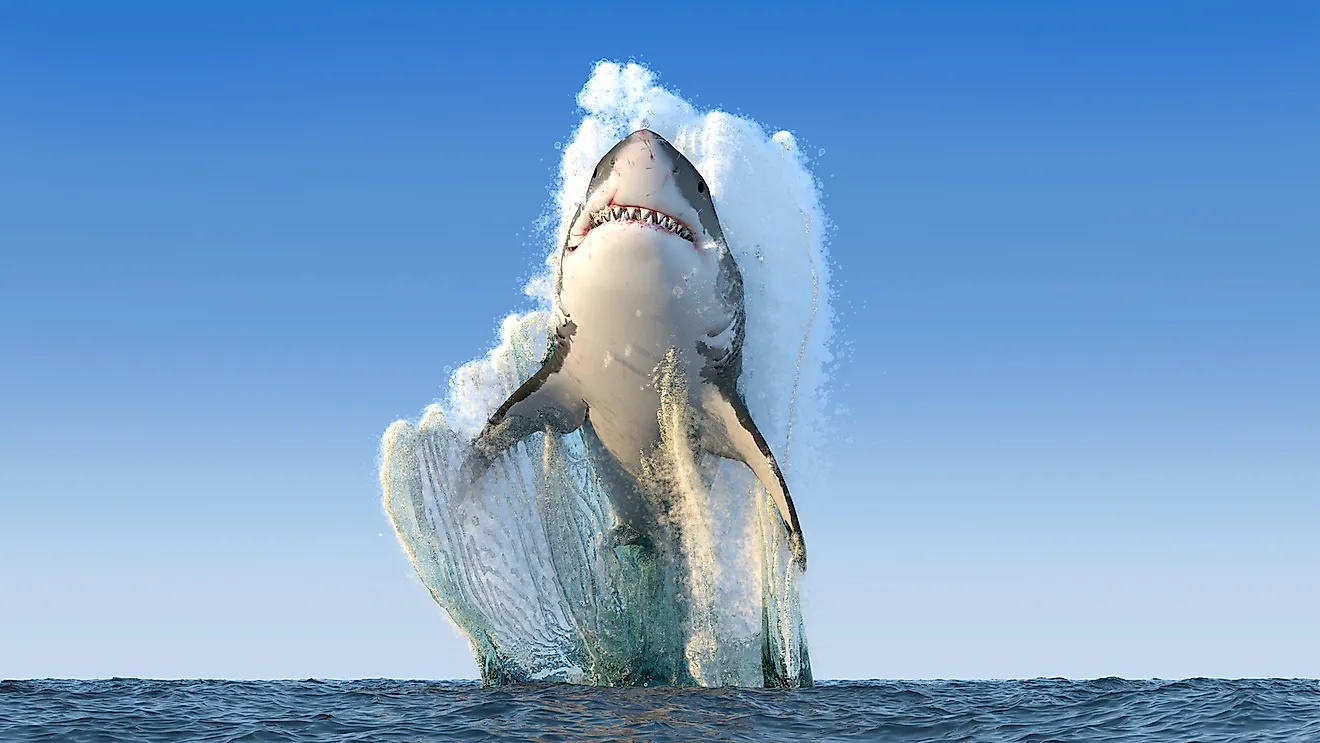What Is The Ecological Role Of Sharks?

Sharks have been swimming the oceans for more than 400 million years, long before dinosaurs walked on land. They have maintained their status as apex predators of the sea since the beginning, but dwindling populations threaten this honor. Sharks have fallen victim to negative stereotypes created by humans. However, what should worry us the most is a world without sharks. Every year about 100 million sharks are killed worldwide, including tens of millions that are killed for their fins to produce expensive cuisine. As apex predators, sharks maintain a healthy ocean ecosystem, and their loss dictates unpredictable and devastating consequences.
Sharks As Top Predators
Sharks are on top of the ocean food chain because they have limited natural predators. They feed on animals below them in the food chain and help maintain the balance of the ecosystem. Top predators control the population of their prey, which in turn regulates the prey species of those animals. The diet of apex predators is varied, allowing them to switch prey when populations are low. In addition, sharks also control the spatial distribution of prey through intimidation. Fear of sharks causes other species to alter their activity level and habitat use, leading to variation in predation and abundance of organisms. By preventing a single species from monopolizing resources, sharks increase the diversity of the ecosystem. A study in the United States indicates that the elimination of sharks results in unchecked populations of cow-nose rays and the eventual destruction of the shellfish industry. Similar studies in Belize suggest that the withdrawal of the predators leads to the total collapse of the ecosystem. In addition to keeping a balance in the oceans, sharks are pivotal to maintaining a healthy marine ecosystem by removing sickness and diseases. They target weak individuals and help eliminate the spread of infections and genetically vulnerable individuals.
Great Sharks In The North Atlantic
The population of great sharks along the east coast of the United States has declined to levels below functional elimination. This means that they are unable to replicate the functions and behaviors of similar species in other oceans and cannot serve the purpose of apex predators. In the past 15 years, the population of white, thresher, and scalloped hammerhead sharks declined by 50% and 75%, respectively, while prey including skates, rays, and smaller sharks increased ten-fold. The effect of the decline has been felt throughout the ecosystem resulting in an unbalanced marine population. Without the sharks, the population of the cownose ray skyrocketed, leading to a decrease in the number of clams and oysters.
Tiger Sharks In Australia
The tiger sharks of Shark Bay in Australia alter the distribution of prey and help and maintain a stable seagrass community. Green sea turtles and dugongs move to taller seagrass to feed and escape sharks, giving shorter grass the time to regenerate. Dugongs prefer the shorter but nutritious seagrass at the center of large grassy patches, but it is difficult to hide from tiger sharks in such locations and are therefore forced to feed on the larger patches. By forcing dugong to change the preference, the sharks keep grazing in check. Tiger sharks also influence the behavior of animals not regularly in their diet. They directly or indirectly affect the foraging habitats of pied cormorants and bottlenose dolphins.
Sleeper Sharks In Alaska
Dietary shifts of harbor seals in Prince William Sound, Alaska, is another example of how shark intimidation results in a behavioral modification to the benefit of other fish species. Although death from shark attacks is low, the seals change their foraging habitat in response to intimidation from the predators. The walleye pollock and Pacific herring are the main diets of the harbor seals. Herring congregate on the surface of the ocean and are widely dispersed, but the pollock are continuously distributed in the deep waters. When sharks are present in the deep sea, the seals feed on fatty fish in the shallow waters and move to deeper waters when the sharks migrate to the coastline. Removing sharks from the ecosystem release seals from fear, allowing them to feed on both prey species freely.
Declining Shark Population
Humans have created a stereotype for sharks due to their fearsome nature and the ability to inflict severe damage. The truth is that all attacks occur when humans venture into shark territory. There are more than 350 species of sharks, but they remain some of the most misunderstood animals on the planet. A vast majority are harmless to humans as three species; white, bull and tiger sharks perpetrate nearly two-thirds of shark attacks. While sharks kill about 15 people annually, humans kill more than 100 million sharks. Over the past century, the global population of the species has declined by about 90%. Although some fisheries target the species, most are bycatch. Unwanted sharks are either sold off to shark traders or thrown overboard, leaving many injured or dead. About 50 million sharks are captured annually as bycatch.











